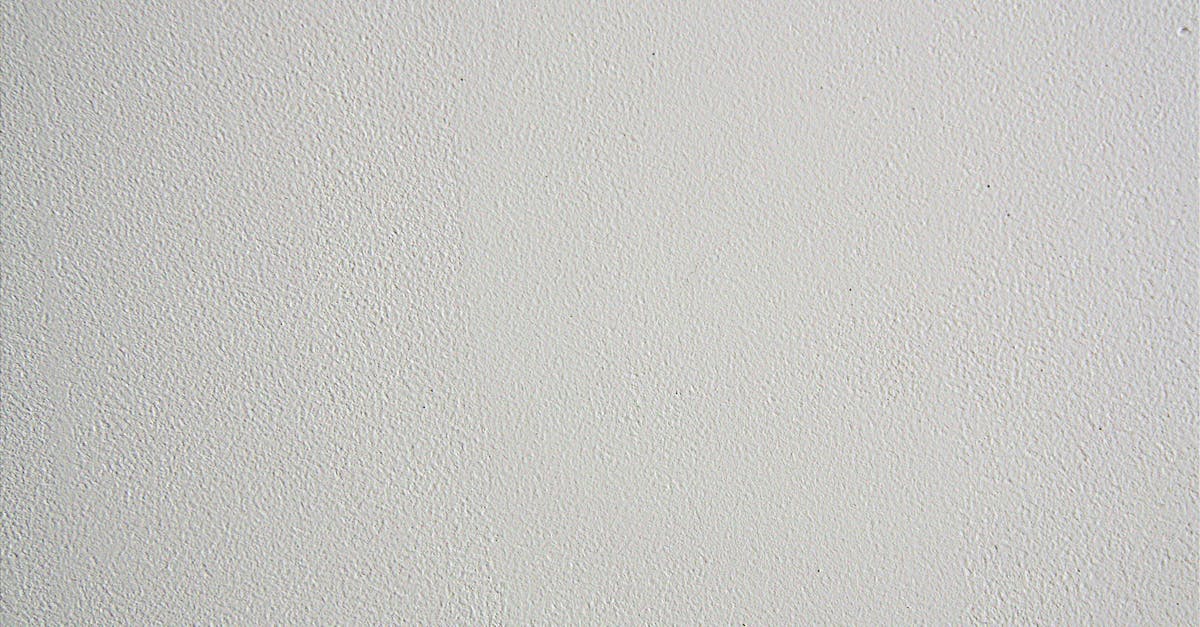Using color strategically can significantly enhance your home’s architectural features. By employing techniques such as accent walls, contrasting trim, and two-tone walls, homeowners can draw attention to key elements like moldings and built-ins. Additionally, choosing the right paint finishes helps highlight specific details by reflecting light and providing depth. Consider the function of your space when selecting colors, as bold shades can energize while softer tones promote focus. Experiment with various color schemes, such as monochromatic or contrasting colors, to create a visually appealing workspace that showcases your unique architectural elements.
Current Trends in Home Painting and Remodeling
Revitalizing a home goes beyond mere aesthetics; it involves strategically enhancing architectural features to create inviting, stylish spaces. With the rise of interior design trends focusing on uniqueness and personal style, homeowners are now looking to distinguish their spaces with captivating colors and innovative techniques. The potential of paint as a transformative tool has never been clearer. It allows for the highlighting of various elements—from crown moldings to built-ins—bringing depth and character to each room.
Modern homeowners are becoming increasingly aware of how color choices can affect the mood and feel of their surroundings. Whether incorporating bold accents to create contrasts, or selecting soothing tones for relaxation, the possibilities are limitless. Additionally, advancements in painting materials and techniques are paving the way for more creative applications that maximize visual impact. This article delves into the latest trends in home painting and remodeling, offering practical tips and insights that inspire homeowners to elevate their living spaces through thoughtful design choices.

| Feature | Details |
|---|---|
| Accent Walls | Utilize a contrasting color on a wall to highlight elements like fireplaces or shelving. |
| Ceiling Highlights | Paint beams or recessed ceiling areas in a different color to draw attention. |
| Two-Tone Walls | Apply a darker color below a chair rail and a lighter shade above for depth. |
| Contrasting Trim | Choose trim colors that stand out against walls to emphasize windows and doorways. |
| Bold Built-Ins | Paint built-in shelves a contrasting color to make them a focal point. |
| Textured Finishes | Experiment with high-gloss finishes on trim to enhance visual interest. |
| Faux Techniques | Use techniques like color washing to add depth to features such as panels or beams. |
| Color Blocking | Create sections of color on the walls to emphasize geometric architectural details. |
«`html
Current Trends in House Painting and Remodeling
Homeowners are increasingly recognizing the power of color and design in transforming their living spaces. In recent years, the trends in house painting and remodeling have shifted towards a focus on enhancing architectural features, creating cohesive designs, and utilizing innovative materials. This guide explores the latest painting trends and how they can revolutionize your home.
Highlighting Architectural Features
Architectural elements such as crown molding, exposed beams, and custom built-ins add unique character to a home. However, these features often go unnoticed. A paint job can significantly enhance their visibility, creating a stunning focal point in any room. Here are some effective strategies:
- Accent Walls: One of the simplest methods to bring attention to a unique feature is to use accent walls. Choose a bold color for the wall behind a fireplace or a built-in bookshelf. For example, a deep emerald green wall behind white trim can create a dramatic look.
- Contrasting Ceilings: Don’t forget about the ceilings! A soft pastel hue can accentuate intricate moldings while darker colors on beams add depth and elegance to the space.
- Two-Tone Walls: Using two colors can create visual interest and highlight details such as wainscoting or chair rails. A dark base with a lighter top can make these architectural accents pop.
Popular Color Trends
Choosing the right color palette is essential for a successful remodeling project. Here are some of the most popular color trends that resonate well with current home designs:
- Earthy Tones: Shades such as terracotta, taupe, and sage green bring the feeling of nature indoors, creating a calm and inviting atmosphere.
- Bold Accents: Bright and bold colors, such as navy blue or deep burgundy, can serve as accents in smaller areas, bringing personality and vibrancy.
- Neutral Palettes: Soft whites, beiges, and grays remain popular for their versatility and ability to create a serene backdrop for furnishings and decor.
Innovative Techniques and Finishes
In addition to color selection, the technique and finish of the paint can make a significant impact. Homeowners are opting for more textured and sophisticated finishes to enhance the beauty of their interiors:
Texture and Sheen
The texture of paint can elevate a room’s aesthetic. Here are some notable finishes:
- Glossy and Semi-Gloss Finishes: These finishes are excellent for trim, moldings, and cabinetry, reflecting light and providing a polished look.
- Matte Finishes: For walls, matte finishes create a soft, elegant finish that contrasts wonderfully with glossy accents.
- Metallic Paint: Adding metallic finishes on ceilings or architectural details can create a luxurious feel, enhancing visual impact.
Faux Techniques
Faux painting techniques, such as color washing or sponging, add depth and interest. These techniques can be utilized to mimic materials like wood grain or marble, enhancing architectural features without overwhelming the space.
Sustainable and Artisan Materials
As sustainability becomes increasingly important, many homeowners are turning to eco-friendly materials and artisan products for their remodeling projects. Artisanal handmade paint not only supports local artisans but also ensures quality and unique finishes.
- Low-VOC Paints: Choosing low or zero-VOC (Volatile Organic Compounds) paints ensures better air quality and less environmental impact.
- Natural Finishes: Utilize natural materials for trim and cabinetry, paired with organic paint solutions to achieve a cohesive, sustainable design.
Creating a Cohesive Flow
A well-designed home features a seamless transition between rooms. When painting, it’s essential to consider how different colors and styles will work together throughout the space.
- Color Coordination: Select a color palette that flows harmoniously from one room to the next while allowing for variation to maintain interest.
- Consistent Use of Materials: Using similar materials, such as the same trim color or wooden accents, throughout the home fosters a cohesive design.
- Defined Spaces: Use color to define spaces. For example, a bold statement wall in a home office can separate work from living areas while still being aesthetically pleasing.
Tips for Success
To ensure a successful painting and remodeling project, here are some practical tips to consider:
- Plan Ahead: Take the time to assess existing architectural features and consider how you want to highlight them before selecting paint colors.
- Test Color Samples: Always use sample paints to see how colors will appear in natural light before committing to a full paint job.
- Invest in Quality Products: High-quality paints and tools lead to a smoother application and longer-lasting results, especially on detailed projects.
- Stay Organized: Creating a color palette or mood board can help keep your vision organized throughout the remodeling process.
Incorporating these current trends in house painting and remodeling can make a significant difference in achieving a stylish and functional space that reflects personal taste. From emphasizing architectural features to selecting the right color palettes and finishes, every choice contributes to creating a harmonious environment. For further insights on using color in artistic ways, consider exploring aesthetic color trend principles that can enhance your home’s beauty.

Transform Your Space Today!
Experience the magic of a fresh coat of paint and expert remodeling that can elevate your home’s aesthetic and value. Our dedicated team is ready to bring your vision to life with professional craftsmanship and personalized service. Don’t wait—let’s create a stunning environment together!
Current Trends and Tips in House Painting and Remodeling
Tips for Highlighting Architectural Features
- Use Accent Walls: Create a focal point by painting a bold color behind significant features like fireplaces or built-ins. This draws the eye and adds depth to the space.
- Contrast Ceilings: Utilize paint to emphasize ceiling features such as beams or crown molding. A dark hue on the beams against a lighter ceiling can create aesthetic depth.
- Implement Two-Tone Walls: Paint the lower part of walls in a darker shade to highlight wainscoting or chair rails. The upper section can be a lighter hue for a sophisticated layered look.
- Contrasting Trim: Transform windows and door trims by painting them a contrasting color to highlight their details. Rich tones like black or navy can introduce sophistication.
- Colorful Built-Ins: Change the color of built-in shelves or niches to make them into statement pieces. Choose a hue that complements the overall design.
- Finish and Texture Choices: Experiment with different paint finishes to enhance features. High-gloss paints can create reflective surfaces that stand out against matte walls.
- Explore Faux Techniques: Techniques like color washing or sponging can introduce texture and depth to architectural elements, lending a rustic or authentic appearance.
Current Trends in House Painting and Remodeling
- Sustainable Painting Products: The trend towards eco-friendly paints is gaining momentum, with homeowners opting for low-VOC and non-toxic options that are better for personal health and the environment.
- Bold Color Schemes: Homeowners are moving towards vibrant color palettes, using bold hues to express personality and create lively spaces, especially in areas like home offices.
- Layered Textures: Mixing various paint finishes and textures has become popular, as it adds visual interest and enhances architectural details in a more dynamic way.
- Accent Ceilings: The use of contrasting colors on ceilings is trending, adding drama and drawing the eye upward to elements that may have been unnoticed before.
Frequently asked questions
Glossary of Key Terms Related to Painting and Home Remodeling
- Accent Wall
- A wall that is painted a different color from the others in a room to create a focal point.
- Color Palette
- A selection of colors used together in a design that defines the overall aesthetic and atmosphere.
- Finish
- The surface quality of paint, such as matte, eggshell, satin, semi-gloss, or high-gloss, affecting the appearance and durability.
- Statement Piece
- An architectural feature or element that stands out in a space, often enhanced by paint or design choices.
- Two-Tone Walls
- A painting technique where the lower portion of a wall is painted in one color and the upper portion in another, adding depth and interest.
- Wainscoting
- A decorative wall treatment that includes paneling, often found in the lower half of walls, providing a classic architectural detail.
- Bold Colors
- Vibrant and striking hues that can energize a space and draw attention to specific features or areas.
- Architectural Features
- Elements of a building’s design, such as moldings, beams, or built-ins, that contribute to its character and style.
- Primer
- A preparatory coat of paint applied before the main color, ensuring a smooth surface and proper adhesion.
- Contrast
- The difference between colors or textures that helps to highlight and define architectural details within a space.
Utilizing color strategically can significantly enhance the architectural features of a home, transforming spaces into dynamic and visually appealing environments. By carefully selecting colors to emphasize unique elements like molding, trim, and built-ins, individuals can create natural focal points that add character and depth. Experimenting with techniques like accent walls, two-tone walls, and contrasting trims can provide a modern twist while showcasing the home’s unique design. With these insights, it’s time to embrace the power of color and bring certain architectural features to life in your own spaces.
Accent Walls
One of the most effective ways to draw attention to key architectural features is through the use of accent walls. Painting the wall behind elements such as a fireplace or built-in shelving in a contrasting color can create a natural focal point in the room.
- Consider colors like deep navy or rich terracotta to make a striking impact.
- Ensure the accent color complements the overall color palette of the room.
Contrasting Trim
Enhancing doorways and windows with contrasting trim can make these architectural details stand out and achieve crisp, clean lines.
- Choose dark or bold colors like black or muted gold to elevate sophistication.
- For decorative doorways, use high-gloss paint for a visually striking effect.
Two-Tone Walls
Utilizing two-tone walls can effectively emphasize features like wainscoting or chair rails. This technique allows you to play with colors that provide a contrast and create depth.
- Opt for a darker color on the lower wall with a lighter shade above for an enhanced effect.
- Experiment with combinations like charcoal gray and white for a modern look.
Enhancing Ceilings
Ceilings often hold unexploited design potential. Using color strategically can highlight their features.
- Paint exposed beams a dark color against a light ceiling to create dramatic depth.
- Consider using pastel shades on the ceiling to emphasize intricate moldings without overpowering the space.
Bold Built-Ins
Transform built-in features with bold color choices. Painting these elements different from the walls can turn them into statement pieces.
- Choose complementary colors for a cohesive design.
- Consider painting the interiors of shelves with contrasting shades to showcase decor items.
Transform Your Space Today!
Experience the beauty and elegance of expertly applied paint and remodel services. Our team is dedicated to enhancing your home’s architectural features while creating a space that reflects your unique style. Don’t wait any longer; let us help you bring your vision to life!
Sophia Torres is the creative mind behind the most dazzling transformations at TS Painting & Restoration. With a strong background in interior design and a deep passion for tropical color palettes, she has helped hundreds of clients revitalize their spaces into vibrant and inviting environments. Born in Colombia and raised in Florida, Sophia brings a unique perspective to her work, blending Latin American influences with modern design trends.
Sophia’s vision of color goes beyond the conventional. She is known for her ability to create bold and unexpected combinations that reflect Florida’s natural beauty. Her focus on color psychology and strategic use of tones allows her to transform any environment, making each project a showcase of her clients’ personal style. On her blog, she shares practical tips on how to choose colors that not only beautify but also enhance emotional well-being and create harmony in the home.
When not working, Sophia enjoys exploring art galleries, experimenting with DIY projects, and finding inspiration in Florida’s lush landscapes. For her, design isn’t just about aesthetics; it’s about creating spaces that tell a story, reflect the identity of those who live there, and evoke positive emotions. At TS Painting & Restoration, Sophia is committed to helping homeowners discover how colors can transform their homes into true havens of tranquility and beauty.


